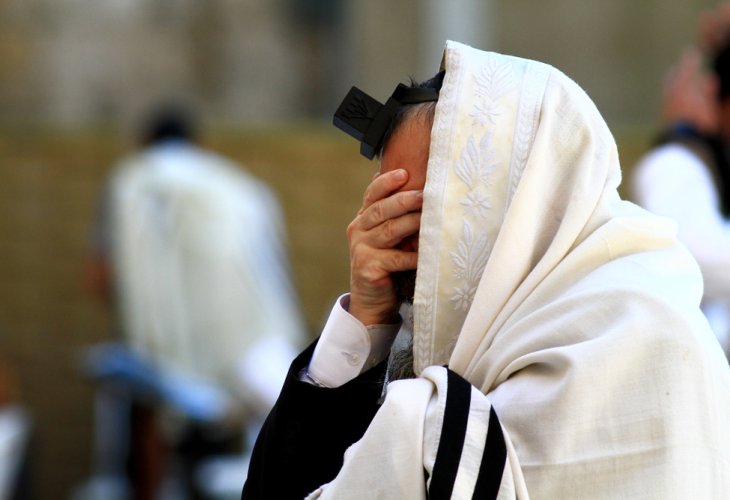Beginners Guide
It's Difficult for Me to Pray Shacharit- How Can I Overcome This Challenge?
Rabbi Shmuel Pollack candidly reveals challenges in Shacharit prayer and shares insights into the practice.
 (Photo illustration: shutterstock)
(Photo illustration: shutterstock)It's hard for me to pray the Shacharit prayer. I want to pray with enthusiasm and energy, but I'm struggling. How do I crack the code?
Let’s divide all the Jews who pray into three groups. For our purposes, we’ll divide them according to minutes on the clock. We have the group of one hour and twenty or one and a half-hour prayer, the group of twenty-five minutes, and the group of fifty-five minutes.
Those who pray Shacharit for 25 minutes aren't really into the prayer; they come to the synagogue to check it off their list. They arrive in the middle and rush through the prayer.
In the second group, there are those who pray Shacharit every day for an hour and twenty minutes, or even more (!). These are special individuals, on a high level, who have special enthusiasm and vitality in prayer, and their prayer looks very different to most.
I'm not part of the twenty-five-minute group nor the hour and a half group. But I want to talk about the average type- those who pray on average 55 minutes, give or take. This group makes up the vast majority of Torah scholars and rabbis; these are people whose prayer is actual prayer. On one hand, they don't look to just check it off their list, and on the other, they don't pray with extraordinary enthusiasm. They are average people and they usually pray for 55 minutes, or a bit more.
I'm particularly curious about these people and what they do in prayer. I have no questions about the righteous Jew who prays for an hour and a half or more- because even if they pray for two and a half hours - I get what they have to do there. They know how to pray.
But this average kind of 55 minutes is quite restrained. You don't see them reaching high spiritual heights in prayer, they don't burst into tears or sweat from passion. They pray calmly, like counting coins, and it doesn’t seem like they’re about to explode from boredom.
I'm referring to mature people who have been praying this way for 40 years. Are they also sitting on pins and needles like me? It certainly doesn't seem so. It doesn’t look like they’re fidgeting in discomfort. On the other hand,I also don't see unusual enthusiasm. So what is it?
I have thought a lot about it and reached the following conclusion: Prayer is work. Work has its language. In work, there is a concept called work ethic. In work, there are working hours. In work, there is what is called "time to work." Shalom. Farewell. I'm going to work.
Shacharit is the service of Hashem. I go to work for Hashem. And since prayer is work, one must arrive at work on time. The boss comes first to see if the workers arrived on time. The boss also rewards the 10 diligent workers who arrived first.
Until I understood this point, prayer was something I saw as related to me. I need to feel. To connect. To be excited. To be filled with yearning. But in reality, it isn't. In day-to-day life, it doesn’t work. A burst of emotions is something that comes once in a while, but in the normal routine of life, strong excitement doesn't show up regularly. Just as every day isn't a birthday and not every day is Purim, so too not every day does one get intensely excited.
What does happen every day? Work. Every day one goes to work. And Shacharit, Mincha, and Maariv of daily life is work. Just like there are ushers who work happily until their shift starts at six, and municipal workers whose job starts at eight. Jews begin work at seven or eight in the morning. What's the work? Serving Hashem! Don't expect special excitement. Don’t expect any spiritual uplift. The boss wants to see work ethic. He wants to see you standing there on time – at work.
Prayer is Work, and You Need to Get There
In my opinion, this is the secret strategy of all those devout Jewish people who have been praying Shacharit every morning for a full hour for over 40 years. These are people with work ethic. There's a person who has come to work for forty years. He arrives. He clocks in. He prays what needs to be prayed. He doesn't bluff.
I must emphasize, of course, that there are those who are on a higher level. It's clear that someone who comes to prayer as work still has room to grow. But for someone who is not at that level, to pray like a person, they must first understand that prayer is work.
After understanding that prayer is work, and being able to show up on time, it is then possible to advance to the next stage that is known as service of the heart.
Even if there may be fluctuations in your enthusiasm for prayer, it is work and you must still show up. At times you will pray without emotion but you will remain working for the boss, the Creator of the Universe.
The foundational work of the heart is to understand that there is a boss for whom we work. The moment I realized that I'm showing up to prayer because I work for Hashem, suddenly, to my great surprise, I started to connect. I began to feel a certain flavor in prayer, which may be light at the end of the tunnel.
There are more stages in the work of prayer, but for now the main thing is that I was accepted for work. Thank you Hashem, for choosing us from all nations and bringing us closer to Your service.

